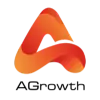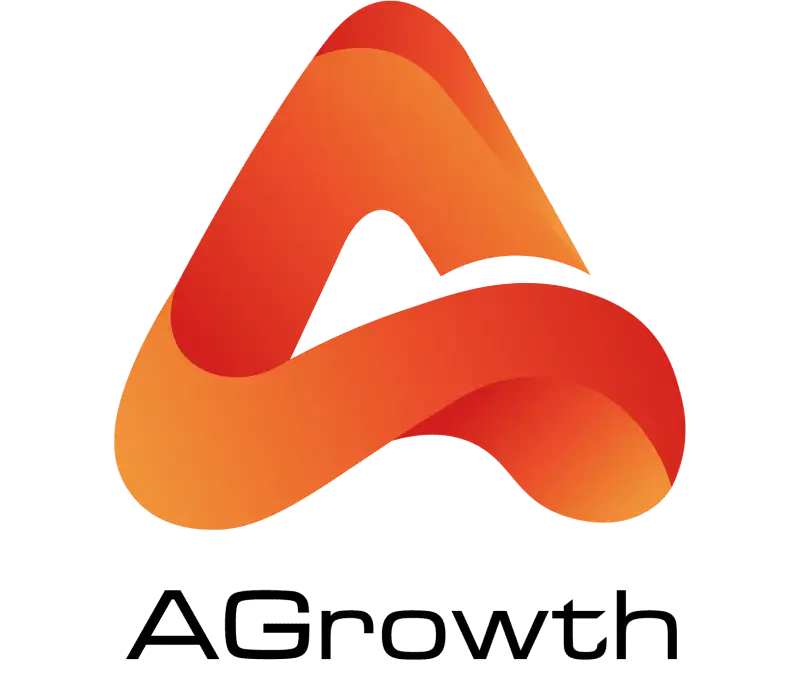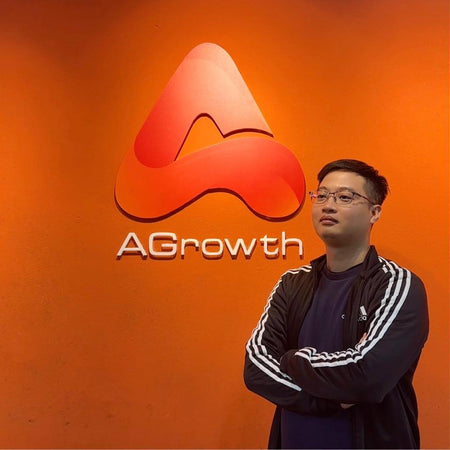
Table of Contents
Facebook Ad Optimization: How to Maximize Your Campaign Performance
Facebook remains one of the most powerful platforms for digital advertising — but without proper optimization, even a well-funded campaign can underperform. Whether you’re targeting new audiences or scaling existing ones, Facebook ad optimization ensures that your campaigns run efficiently, reach the right users, and deliver measurable ROI.
This guide breaks down everything you need to know about optimizing your Facebook ads, from understanding the algorithm to implementing data-driven tactics that actually move the needle.
Understanding Facebook Ad Optimization
Before diving into advanced strategies, it’s essential to understand what “optimization” really means in the context of Facebook Ads.
What is Facebook ad optimization?
Facebook ad optimization is the ongoing process of improving your campaign performance through data-driven adjustments. It includes refining audience targeting, testing creative variations, optimizing placements, adjusting bids, and improving conversion events.
The goal is simple: to maximize the results (clicks, conversions, engagement, or revenue) while minimizing the cost per result (CPR, CPA, or CPM).
How Facebook’s optimization algorithm works
Every time you launch a campaign, Facebook’s algorithm evaluates billions of data points to determine the best way to deliver your ads. The platform uses machine learning to find the right combination of audience, creative, and placement that achieves your chosen objective.
Key factors influencing optimization include:
-
User behavior signals: how people interact with your ads.
-
Historical performance data: ad relevance, click-through rate (CTR), and conversion rates.
-
Budget and bid strategy: how much flexibility the algorithm has to test different delivery paths.
-
Conversion data: how effectively your pixel or CAPI sends signals back to Meta.

How to optimize Facebook Ads
A successful campaign is a machine with multiple moving parts. Optimizing your ads means fine-tuning each of these core components.
Define Clear Goals and Campaign Structure
Every successful optimization strategy starts with clarity. If your goals are vague — “get more sales” or “increase reach” — Facebook’s algorithm can’t learn effectively.
Set Measurable Objectives
Use SMART goals (Specific, Measurable, Achievable, Relevant, Time-bound). For example:
-
Increase website purchases by 25% within 30 days.
-
Reduce cost per lead by 20% using custom audiences.
-
Improve CTR on retargeting campaigns by 10%.
When goals are clear, optimization becomes easier to measure and refine.
Organize Your Campaign Structure
A clean account structure improves optimization performance. Follow this hierarchy:
-
Campaign level: choose the right objective (Sales, Leads, Awareness, etc.)
-
Ad set level: define audience, placement, budget, and schedule.
-
Ad level: test creatives, formats, and CTAs.
Avoid overlapping audiences or running too many ad sets with similar targeting — it causes competition within your own account, increasing costs.
Optimize Your Target Audience
Targeting is the foundation of optimization. Even the best creative won’t perform well if shown to the wrong audience.
Use Detailed Targeting Strategically
Facebook’s audience tools allow precise segmentation based on demographics, interests, and behaviors. However, too narrow targeting can limit delivery.
Tips:
-
Start broad with interest-based targeting, then narrow down based on performance.
-
Combine custom audiences (website visitors, app users, video viewers) with lookalike audiences to balance scale and accuracy.
-
Refresh your lookalike audiences every 30–60 days to avoid audience fatigue.
Leverage Retargeting Campaigns
Retargeting allows you to reconnect with users who already interacted with your business. These warm audiences tend to convert at higher rates.
Examples include:
-
Website visitors who didn’t complete checkout.
-
Users who engaged with your Instagram or Facebook page.
-
Leads who opened your form but didn’t submit.
Use personalized creatives and messaging to re-engage them effectively.
Improve Ad Creative and Copy
Your ad creative is often the first thing users notice — and one of the most important optimization levers.
Test Multiple Variations
Always test different ad formats (image, video, carousel, collection). For each, create variations in:
-
Headline and primary text.
-
CTA buttons.
-
Visual design or style.
Use A/B testing to determine which version drives higher CTR and lower CPA.
Focus on Scroll-Stopping Visuals
Make your ads stand out in a crowded feed.
Best practices:
-
Use bright, high-contrast colors.
-
Feature people or emotions (ads with faces often perform better).
-
Keep text minimal but impactful.
-
Include your brand’s tone and visual consistency.
Write Compelling Ad Copy
Good copy connects emotion with action.
Tips for optimization:
-
Start with a hook: address a pain point or curiosity gap.
-
Highlight benefits over features.
-
End with a clear CTA: “Shop Now,” “Learn More,” or “Get Started.”
Optimize Ad Placements and Delivery
Facebook offers multiple placements — Feed, Stories, Reels, Marketplace, and more. Choosing the right one can greatly affect performance.
Automatic vs. Manual Placements
-
Automatic Placements: Facebook’s default and often best option for efficiency. The algorithm distributes the budget across placements that deliver the best results.
-
Manual Placements: Ideal when you know where your audience engages most, e.g., mobile feed or Instagram Stories.
Monitor placement performance in Ads Manager and exclude low-performing areas if necessary.
Optimize for Device and Platform
Check analytics to see which devices and platforms convert best. For instance, mobile often outperforms desktop in CTR, but desktop may yield higher purchase intent.
Adjust your creative sizing and format accordingly to improve experience and conversion. Ensuring your visuals are perfectly formatted for every placement is key. Get all the current specs in our complete Facebook ad size guide.
Enhance Conversion Tracking and Data Accuracy
Optimization depends on reliable data. If tracking is inaccurate, your decisions will be misinformed.
Set Up Meta Pixel and Conversions API (CAPI)
-
Meta Pixel: Tracks web actions like page views or purchases.
-
Conversions API (CAPI): Sends data directly from your server to Meta, bypassing browser limitations and improving data accuracy.
Combining both provides more complete event tracking and better optimization signals.
Define High-Value Conversion Events
-
Facebook learns faster when your campaign is optimized for meaningful actions.
-
For e-commerce, prioritize “Purchase” or “Add to Cart.”
-
For lead generation, use “Lead” or “Complete Registration.”
Avoid optimizing for low-value actions like “Page View” unless you’re in an awareness phase.
Optimize Budget and Bidding Strategy
Budget and bidding decisions influence how efficiently your campaigns reach potential customers.
Choose the Right Bidding Strategy
-
Lowest Cost: Let's Facebook get the most results for your budget.
-
Cost Cap: controls average cost per result — useful for maintaining CPA stability.
-
Bid Cap: limits maximum bid per auction — suitable for experienced advertisers.
Experiment and monitor which strategy maintains a balance between volume and cost.
Allocate Budget Smartly
-
Use Campaign Budget Optimization (CBO) to let Facebook distribute funds among ad sets based on performance.
-
Gradually scale budgets — avoid sudden 50%+ increases that may reset learning.
-
Reallocate budget toward top-performing ad sets weekly based on ROAS or CPA data. Managing your spend effectively is crucial for ROAS. To understand what influences your spending, read our detailed breakdown of Facebook ad costs.
Monitor and Optimize Performance Continuously
Optimization is not a one-time task — it’s a continuous loop of analysis and improvement.
Track Key Performance Metrics
Focus on KPIs aligned with your campaign goal:
-
CTR (Click-Through Rate) – measures engagement quality.
-
CPA (Cost Per Action) – tracks conversion efficiency.
-
ROAS (Return on Ad Spend) – evaluates profitability.
-
Frequency – helps identify ad fatigue.
Analyze performance trends over time, not just day-to-day fluctuations.
Use the Learning Phase Effectively
Each new ad set enters a learning phase, where Facebook tests delivery.
To exit learning faster:
-
Avoid frequent edits to the budget or targeting.
-
Use larger budgets and broader audiences to allow sufficient data.
-
Wait for at least 50 optimization events before making major changes.
Use Automation and AI Tools for Optimization
AI-driven optimization can drastically improve efficiency by automating testing and performance adjustments.
Practical examples include:
-
Automated rules in Ads Manager (pause low-CTR ads or increase budget on high-ROAS sets).
-
Predictive analytics tools that identify audience segments likely to convert.
-
Creative optimization platforms that test image and text combinations automatically.
AI tools don’t replace strategy — they enhance decision-making speed and accuracy.
AGROWTH - META AGENCY ACCOUNT
⭐ Managed campaigns with expert guidance
⭐ Flexible invoice-based billings, custom top-ups
⭐ High resistance to suspension via agency tier
⭐ Quick fund transfer to new account if needed
⭐ Priority support via Facebook Partner channel
⭐ Lower fees from 3%
Facebook Ads Optimization Tips by Campaign Type
While the core principles are universal, the optimization levers you pull change slightly depending on your specific goal.
Facebook Conversion Campaigns
Signal integrity and creative testing.
-
Your CAPI and AEM setup is everything. Double-check your Event Match Quality in Events Manager.
-
Optimize for your final-funnel event (Purchase). If your pixel is new, you can test optimizing for InitiateCheckout to gather data faster, but Purchase is the end goal.
Facebook Lead Campaigns
Lead quality, not just quantity. A cheap lead that never converts is worthless.
-
Use the "Higher Intent" form option. This adds a confirmation step ("Slide to submit") that filters out bots and accidental clicks. (As recommended by WordStream's guide on lead ad optimization).
-
Keep your Instant Form simple, but don't be afraid to add one qualifying question (e.g., "What is your budget?") to improve lead quality.
-
Use CAPI for Offline Conversions. Upload a list of your leads that turned into "Sales-Qualified Leads" or "Customers." This teaches the algorithm what a good lead looks like, and it will optimize to find more of them.
Retargeting Campaigns
Frequency management and creative sequencing.
-
Manage your Frequency. An audience of cart abandoners is small and can burn out fast. Keep a close eye on this metric and refresh creative often.
-
Use tight exclusions. Your "Cart Abandoners - 7 Days" ad set should exclude "Purchasers - 30 Days."
-
Use sequential retargeting. Show a user who viewed a product a testimonial (Ad 1), then show them a discount offer (Ad 2) a few days later.
Common Mistakes in Facebook Ad Optimization
Even experienced advertisers can unintentionally sabotage their campaigns by applying the wrong optimization tactics. Facebook’s algorithm rewards consistency, data accuracy, and strategic testing not random tweaks or guesswork. Below are the most common mistakes that limit your campaign performance and waste your budget.
1. Changing too many variables during the learning phase
One of the biggest mistakes is adjusting multiple elements, such as budget, audience, or creatives, before the ad set exits the learning phase. Every time you make a major edit, the algorithm resets its learning process, which means it needs to gather new data again.
To avoid this, let your ads run long enough to collect at least 50 optimization events (like purchases or leads) before making decisions. If you need to test something new, duplicate the ad set instead of editing the active one.
If your campaign seems “stuck” in learning, check out our detailed guide on Facebook Ads Learning Phase to understand how to stabilize delivery and improve performance.
2. Using the wrong optimization event
Another common issue is optimizing for the wrong event type. For instance, choosing “Add to Cart” instead of “Purchase” may confuse the algorithm about your true goal, especially if your funnel is short. Always match your optimization event to the final conversion you want — not the intermediate step.
If you lack enough conversions for Purchase optimization, start with an upper-funnel event, then switch once you hit stable volume.
3. Over-segmenting audiences
Some advertisers split their targeting too narrowly — for example, creating dozens of small ad sets for similar interests or lookalikes. This can cause audience overlap, higher CPMs, and delivery competition between your own ads.
Instead, focus on a balanced audience size (at least several hundred thousand users) and use Meta’s built-in Advantage+ audience features when possible. A broader audience often performs better because it gives the algorithm more flexibility to find high-value users.
4. Ignoring ad fatigue and frequency
If your frequency is above 3–4 and your CTR drops, your audience may be seeing the same creative too often. High frequency leads to banner blindness and lower engagement.
Monitor your performance metrics weekly and refresh your creatives before fatigue sets in. Rotate new visuals, headlines, and offers to keep your message relevant.
Check our article on Facebook Ads CTR to understand how click-through rate impacts optimization quality.
5. Relying solely on manual bidding or ABO
Manual bidding (Bid Cap or Cost Cap) gives control but can restrict delivery if not properly set. Similarly, using Ad Set Budget Optimization (ABO) across too many ad sets can create an imbalance.
For most advertisers, Campaign Budget Optimization (CBO) provides more stable results because Facebook dynamically allocates spend to the best-performing ad sets.
Test both, but monitor spend distribution closely. A mix of automation and manual oversight usually yields the best balance between control and efficiency.
6. Ignoring conversion tracking issues
Data loss or inaccurate pixel tracking is a silent killer for optimization. If your pixel isn’t firing correctly or your Conversion API isn’t configured, the algorithm receives incomplete signals — leading to poor optimization.
Regularly audit your events in Meta Events Manager. Use Aggregated Event Measurement and verify that your domain is configured correctly to ensure data accuracy.
7. Making changes without enough data
Optimization should always be data-driven, not emotional. Pausing an ad because it hasn’t converted after 24 hours is a classic mistake. Facebook needs enough impressions and conversion data to identify trends.
Use statistical significance as your benchmark — wait until you have at least a few hundred clicks or meaningful conversion samples before judging performance.
8. Neglecting post-click experience
Many advertisers focus solely on the ad itself but forget the landing page. A slow-loading, poorly designed page can destroy conversions, no matter how well your ad performs.
Always test your landing page speed, UX, and mobile responsiveness. Tools like Meta’s PageSpeed Insights or third-party A/B tools can help you find friction points that hurt ROAS.
FAQs
Why is my Facebook ad optimization score low?
This is a diagnostic tool inside Ads Manager. A low score often points to a specific problem Meta has identified, such as a poor Pixel/CAPI connection, creative fatigue, high auction competition, or an audience that's too small. Address the specific recommendation it gives.
How often should I optimize my Facebook ads?
You should monitor your ads daily (checking for sudden death or errors). Optimize (make changes) on a slower cadence, perhaps every 3-7 days, to allow data to accumulate and to avoid resetting the learning phase. Don't make "knee-jerk" optimizations based on one bad day.
What is the best optimization event for Facebook ads?
The best optimization event depends on your campaign goal and the stage of your funnel. For example, if your objective is sales, optimizing for the Purchase event gives the algorithm the strongest conversion signal. However, for new accounts or low-traffic stores, starting with AddToCart or ViewContent can help Facebook gather data faster before scaling to Purchase optimization. The key is to choose an event that has enough daily conversion volume for stable delivery — typically at least 50 conversions per week per ad set.
How do I know if my Facebook ads are fully optimized?
A fully optimized campaign shows stable performance metrics over time — consistent CTR, steady CPA, and predictable ROAS. You’ll also notice your ad sets have exited the learning phase, and performance no longer fluctuates drastically day to day. Monitoring key indicators like Frequency, CTR (Click-Through Rate), and Conversion Rate can confirm that your ads are reaching the right audience with relevant content. When these metrics align with your benchmarks, your ads are considered optimized.
Should I use manual or automatic bidding for optimization?
Automatic bidding works best for most advertisers because Facebook’s algorithm can dynamically adjust bids to reach your target CPA or ROAS. Manual bidding is more advanced and should only be used when you have historical performance data and understand bid ranges for your niche. Use manual bidding if you want tighter control over cost per conversion or need to maintain profitability in highly competitive auctions. Otherwise, automatic bidding usually delivers more consistent optimization results.
Can AI help optimize Facebook ad performance automatically?
Yes. AI tools can analyze large volumes of ad data to identify patterns faster than manual analysis. They can recommend audience segments, automate bidding adjustments, or even generate new ad creatives based on engagement trends. AI optimization helps advertisers save time while achieving more consistent performance — especially when combined with Facebook’s native automation features like Advantage+ placements, dynamic creative, and automated rules.
Related posts:
- Facebook ads Bidding Strategies
- How to scale Facebook ad










Your comment